Certain countries are known to have residents with exceedingly long names – in some cases 5-6 words/parts long. Finland however, is not typically one of those countries. But it appears that Suunto is aiming to grab that title in any way they can with their just-announced Suunto Spartan Sport Wrist HR Baro. In this case HR happens to abbreviate ‘Heart Rate’, while Baro is short for barometer.
This watch builds upon the existing Suunto Spartan Sport Wrist HR unit that I reviewed this past spring. The Suunto Spartan series is, of course, Suunto’s lineup of watches that introduced last year as a successor to the Ambit series. While it got off to a rocky start, things are definitely finding their stride – especially with the incredibly well priced Spartan Trainer that recently came out.
With today’s new watch though, Suunto is aiming to take the Spartan Sport series and add in a barometer for it to display more accurate elevation data, as well as maintain the wrist-based optical HR. This effectively aims to fill the gap on a mountain/hiking focused device that also does optical HR.
In any event – I’ve been using the unit now a few weeks and it’s time to get right into things.
What’s New and Different:
In many ways, you could sum up this entire post with: ‘They added a barometric altimeter to the Suunto Spartan Sport Wrist HR’, and be done with it. And, that’s probably true. But since I have an ample supply of Starbucks Double-Shot energy drink can thingies tonight, I’m going to push on with more details.
See, there are a number of minor tweaks and differences that are worthwhile noting (compared to the basic Sport Wrist HR), many of them trickle-down effects. So here goes:
– Gets Barometric altimeter data (duh)
– Gets FusedAlti (combined GPS and baro altitude for more precise elevation data)
– Gets altitude in daily mode (watch-face)
– Gets automatic altimeter/baro profile
– Gets storm alarm
– Battery life remains the same
– All this for a mere 1g addition to the total weight
So while yes, there is the addition of the altimeter, the impact of that is greater from a software standpoint. Obviously, virtually everything you see above is aimed at the mountain seeker, or someone doing a lot of work with ascending/descending.
All of that previously required the ‘Ultra’ edition, which is not only higher priced, but also carries with it a bigger battery (significantly bigger).
(Left to right: Spartan Ultra, Spartan Sport Wrist HR, Spartan Sport Wrist HR Baro)
Of course, the Ultra edition doesn’t have an optical HR sensor, but the battery differences are massive. Here’s the lineup for the GPS modes (Best, Good, OK). Each of these modes changes the GPS refresh rate and now includes much higher battery savings (using a firmware update coming October 17th) – up to 140hrs on the Ultra now!
Note that they don’t change the heart rate or cadence recording rates, which are always updated at 1-second intervals:
Suunto Spartan Ultra: 18hrs/35hrs/140hrs
Suunto Spartan Sport: 10hrs/25hrs/80hrs
Suunto Spartan Sport Wrist HR: 10hrs/20hrs/40hrs
Suunto Spartan Sport Wrist HR Baro: 10hrs/20hrs/40hrs
Suunto Spartan Sport Trainer Wrist HR: 10hrs/16hrs/30hrs
So as you can see, the battery life hit of the Baro is nil, though it will set ya back an additional $50 over the base Sport Wrist HR edition. Speaking of which, here’s how the lineup currently sits:
Suunto Spartan Ultra: $699+
Suunto Spartan Sport: $399
Suunto Spartan Sport Wrist HR: $499
Suunto Spartan Sport Wrist HR Baro: $549
Suunto Spartan Sport Trainer Wrist HR: $279
One of the things to keep in mind here is that Suunto’s GPS-based elevation does tend to be exceedingly good, so much so that the use cases for a barometric altimeter for many people tends to be slimmer than back in the old days when GPS altimeter data was rougher (or on other competitors devices where it’s rougher or entirely useless altogether…lookin’ at you, FR735XT).
As such, I wouldn’t necessarily shy away from the cheaper Sport Trainer Wrist HR, in fact – it continues to be my favorite out of the entire lineup of Suunto Spartan units. Partially for the size, partially for the price, and partially for the accuracy I see. Which, is a great time to segue into the next section.
Finally – for lack of anywhere else to stick it, the Spartan units that have a barometric altimeter will get a new ski mode that displays the length of runs, number/counter of runs, vertical descent, and maximum speed during the descent. All that comes within the October 17th firmware update.
Early Accuracy Testing:
In having the watch the last few weeks I’ve been getting in sporadic workouts with it. Given that last week was Interbike, and this week is the ANT+ Symposium, my workouts are kinda wonky and all over the place – literally. I’ve got runs and rides with it in Paris, Amsterdam, Las Vegas, and Reno. And now I’m up in Canada.
Further, note that while the hardware is final, the software is considered beta. So likely we’ll see some tweaks between now and October 17th when it starts shipping.
Thus first, let’s start with the HR sensor. In the case of this watch, that’s pretty darn unlikely since the exact optical HR sensor package from Valencell hasn’t changed, nor has the exterior of the unit.
But what I’ve come to see is that accuracy of optical HR in the Suunto lineup seems to vary between the larger Suunto Sport series and the smaller Suunto Trainer. To summarize this entire upcoming section: The smaller (and cheaper) Trainer series seems to have much better accuracy than the Sport series, despite having identical sensor packages.
Why?
Well, size.
The larger the watch, the more it bounces on the wrist while running – no matter how tight you make it. With the Suunto Spartan Sport/Ultra series being larger, heavier, and more top-heavy, this exaggerates the problem compared with the small and lightweight Trainer variants (or compared to the less top-heavy Garmin Fenix5/FR935 options).
To demonstrate this a bit, here are a few runs. The first in Paris where it struggled at the beginning to track HR (despite standing around and waiting for satellite lock):
And again it did the same in Reno during those initial few minutes, followed by cadence-lock spikes later during the harder intervals:
Yet there were cases where it seemed to nail it, like this run in Amsterdam which showed very consistent HR accuracy:
Next, let’s look at the GPS accuracy. I’m not sure what’s going on here, and neither is Suunto. But they’re taking a look at it. In short, during running workouts, it seems to struggle, while cycling seems fine. Even in cases when the cycling terrain is FAR more difficult than the running terrain. For example, this run last night with it in Reno, whereby there’s nothing above me.
///UPDATE: Suunto believes they have found the issue in my GPS data, which is related to GLONASS:
“The GLONASS option is intended to be used in big cities where high buildings both block the sky and generate signal reflections from walls. GLONASS brings more visible satellites on the sky and the SirfStarV chip has an offset correction algorithm used together with GLONASS for correcting for reflections from buildings. It has however turned out in our tests that this correction algorithm actually takes you off track when running on normal trails. That’s why our generic recommendation has been NOT to use GLONASS unless you really are running between buildings.”
I haven’t seen this recommendation previously by any company, though it does roughly match what you’ll see throughout the rest of my post with my data. Note, that I’ve left the rest of the post as-is with the data seen.///
It’s out on the flats with virtually no trees at all, just simple bike paths around a pond to the right there (that loop):
You can see it’s all over the place.
The same with Amsterdam – where it would seem to offset the location randomly throughout the park. It’s the teal line you see crossing water:
Yet mountain biking up in the mountains with snow-covered trees and mountains on the side and it had a solid track for the out and back route:
So not sure what to say on that one. All runs were with GLONASS enabled, and ‘Best’ GPS accuracy. Again, Suunto is digging into these as of this morning (since that’s when I got around to loading them all into the DCR Analyzer).
So what about barometric altimeter accuracy?
Well obviously, that’s why you bought this unit. As you would expect you can either specify a reference altitude or you can use GPS to do this for you:
I generally would use GPS for the initial altitude, for the very simple reason that I generally don’t run/ride/hike in places that always have altimeter markings sitting around at the start. Certainly, when available it’s great to cross-reference that. But in my case, none of my workouts had those available.
To start I’ve got the interesting use case of Amsterdam and being technically under sea level. The watch placed me at –96ft, which is significantly more than the –2m that’s generally agreed upon for the inner core of Amsterdam. Plus, the ‘lowest’ part of the entire Netherlands is only –7m. So that’s wrong. But on the bright side, it was almost identical for my start and end points.
Plus, I learned something interesting with the above: The DCR Analyzer rejects negative elevation values, hence why I can’t show you an overlay chart between the units. Need to get that tweaked! It looks like perhaps the Suunto unit is just as misled about being under sea level as my tools.
Here’s a road ride I did in Boulder City, NV that had some elevation change to it. What’s interesting here is that the initial value altitude offset you see (~40m) between the Edge 1030 and the Spartan/Vivoactive 3. Those two units after settling out in the first few minutes stayed locked on each other for the remainder of the ride. The gap/difference between the units while similar did shift a bit with the gap widening on the Edge 1030 very slightly.
Now again – there was no altitude marker to know for sure which one is right or wrong 100%. However, if I look at USGS elevation data, the starting point of my ride is listed at 801.8m. The Suunto was at 800.2m, and the Vivoactive 3 at 795.6 and the Edge 1030 at 839.8. Seems clear enough to me Suunto nailed this data set.
Btw, as a funny little test of how sensitive the barometer is – check out this chart below. You can see we descended down initially, and then there’s a huge flat section there in the chart. That’s where we spent 2 hours filming stuff for upcoming posts. In this case, the Edge 520 sat on my bike mostly off to the side static, while I wore the Suunto unit on my wrist while I moved around. I was constantly going back and forth in a small section, up and down a hill controlling camera gear. It’s neat though to see how sensitive it is to pick up this 2-8m elevation gain as I did this. Obviously, the Edge didn’t shift much because the bike was static.
This above chart has no valid comparison aspect for the center portion, but I just thought it was kinda neat geekery.
In any case – I’ll be holding out final opinions on all accuracy angles until we get closer to release – but for the barometric part that’s new here, it does seem to be on the ball.
(Note: All of the accuracy related charts were created using the DCR Analyzer tool. It allows you to compare power meters/trainers, heart rate, cadence, speed/pace, GPS tracks and plenty more. You can use it as well for your own gadget comparisons, more details here.)
Wrap-up:
This watch is essentially two things for Suunto. The first is a way to appease those folks looking at the Spartan Ultra series for a barometric altimeter while also wanting optical HR. While the second is offering Suunto a slightly more wallet friendly option to consumers than the Garmin Fenix 5 series, any of which costs more than the new Spartan Sport Baro variant would. It’s priced similarly to the FR935 ($50 more actually), which also has a barometric altimeter. Though those two watches are distinctly different in sizing and form/fashion.
The Suunto definitely has more swank factor in the design than the plastic FR935. While inversely, some might prefer the much lighter and slimmer FR935 (almost half the weight of the Spartan Sport editions). All of which ignores any feature or accuracy comparisons.
And a better time to make those comparisons may be down the road once they start shipping on October 17th. Suunto has noted that more features/updates are on the way to the Spartan line-up. Some of those will be continued catch-up features, while others will be newer innovations. Having seen the list, I think they’re on the right path here. And of course, hopefully they can solve whatever GPS accuracy issues I’m seeing. I’m less confident of the optical HR issues, as those seem to roughly mirror what I saw on the Sport unit this past spring (and of course, they’re basically the same unit).
With that – thanks for reading!
FOUND THIS POST USEFUL? SUPPORT THE SITE!
Hopefully, you found this post useful. The website is really a labor of love, so please consider becoming a DC RAINMAKER Supporter. This gets you an ad-free experience, and access to our (mostly) bi-monthly behind-the-scenes video series of “Shed Talkin’”.
Support DCRainMaker - Shop on Amazon
Otherwise, perhaps consider using the below link if shopping on Amazon. As an Amazon Associate, I earn from qualifying purchases. It doesn’t cost you anything extra, but your purchases help support this website a lot. It could simply be buying toilet paper, or this pizza oven we use and love.

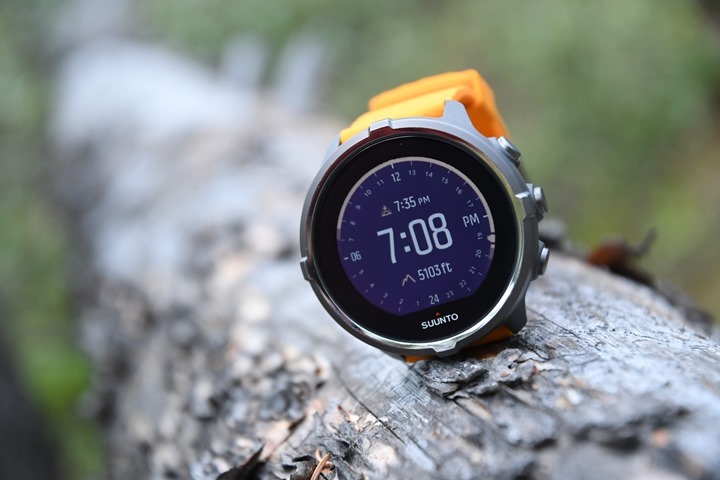
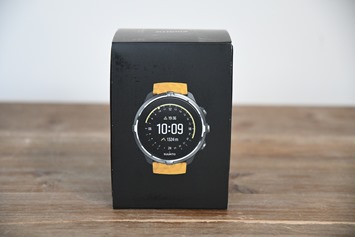
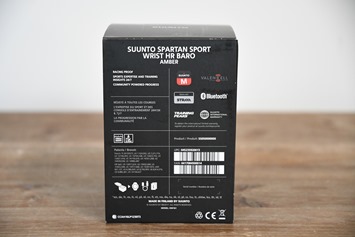
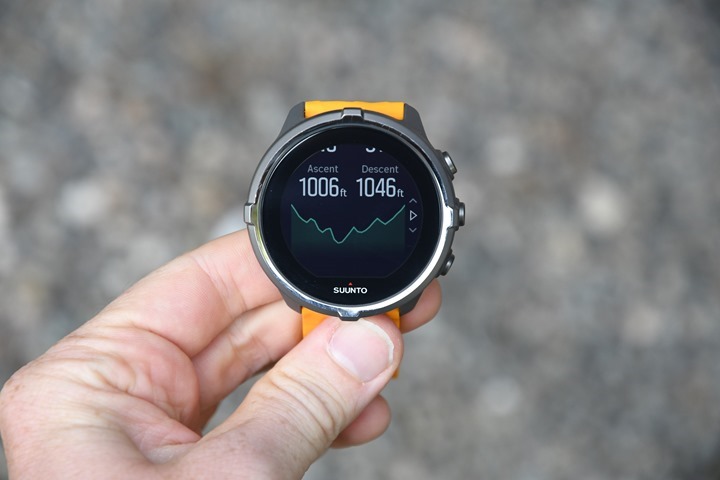
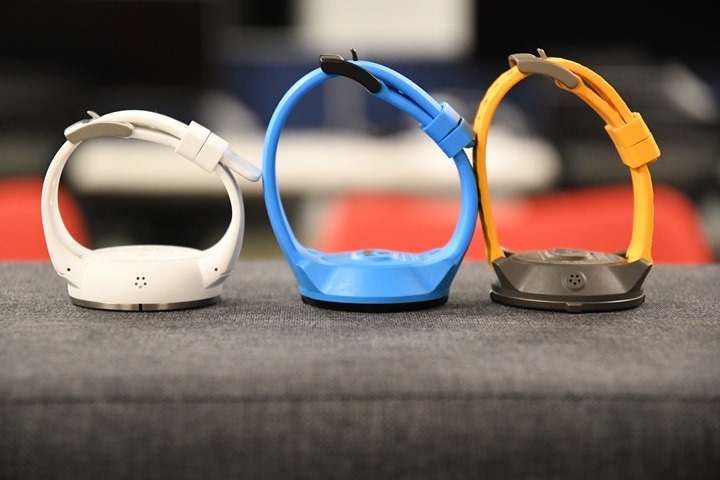
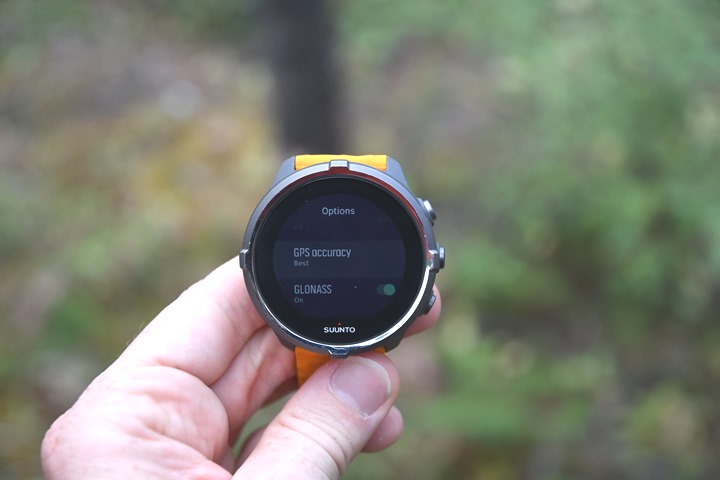




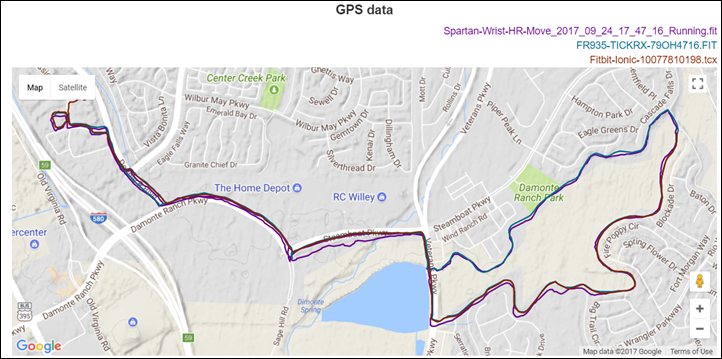
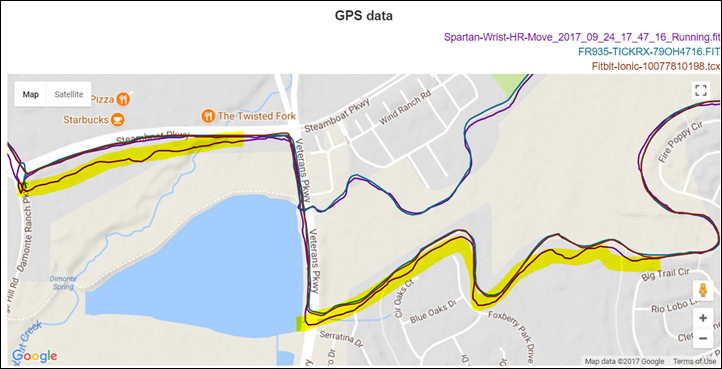

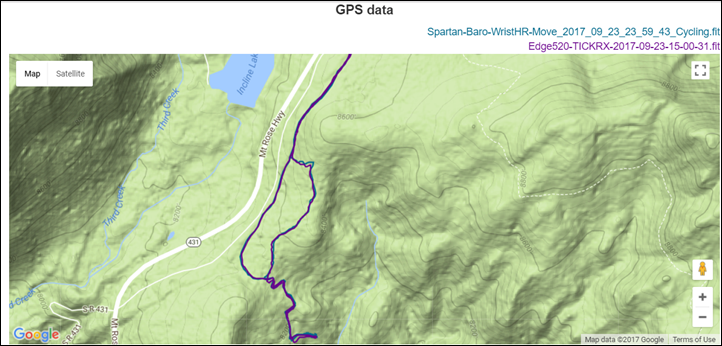
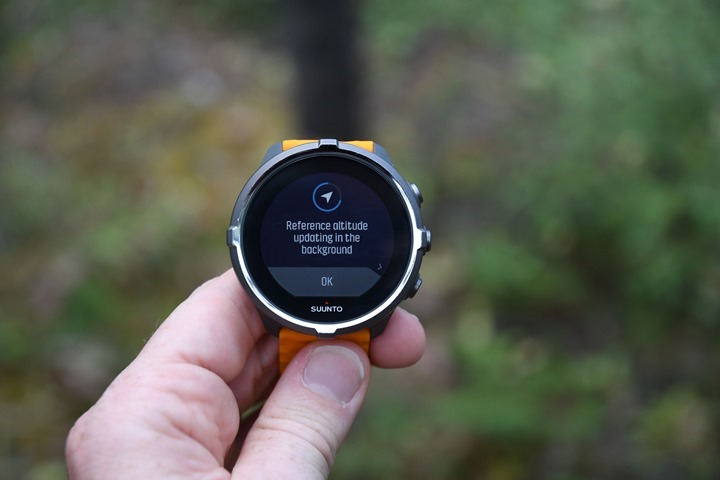
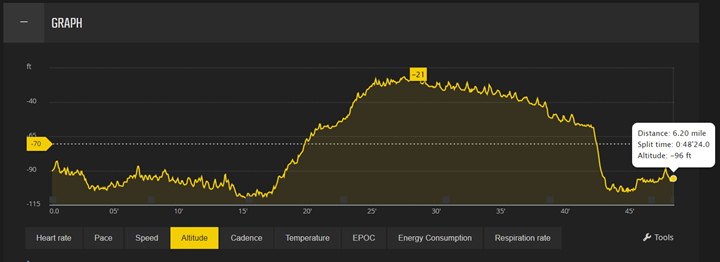

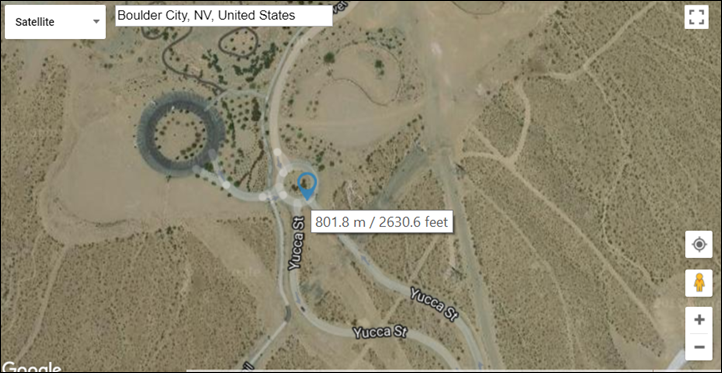

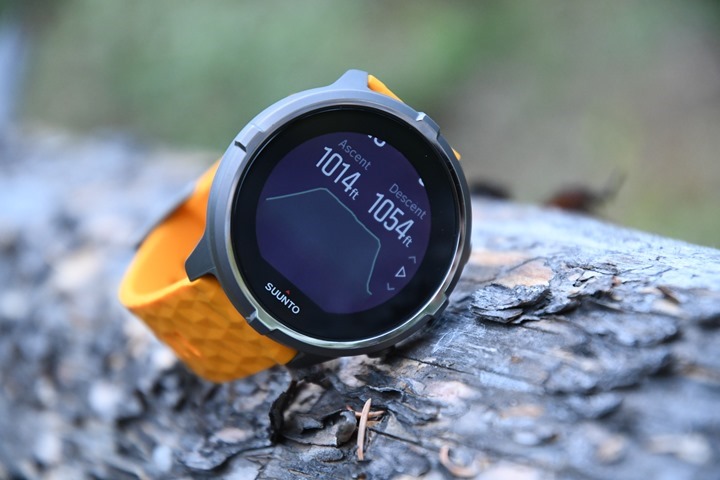


















What does the Spartan Ultra do that the new model doesn’t do? Is it just a question of battery life?
Am I the only one that doesn’t understand which Suunto clock to buy? The last Suunto product I bought was a Garmin Fenix5…
Ultra has the sapphire glass screen and longer battery life.
That’s pretty much it.
Having an Ultra, GPS accuracy is worse with GLONASS enabled. So guess you would get better GPS result w/o GLONASS (Suunto need to re-work this one out ..
I believe Garmin Fenix 3 have the same issue. It will screw my watch accuracy if i turn it on even if i run on the track with nothing but clear blue sky.
It probably has. I have owned and partly still own those Garmins: 920XT, 630, Fenix 5 and 935. With all of them I came to the same result: Glonass makes things worse for me. (I’m a trail-runner, usually no urban environments). I have only anecdotal evidence for that behavior of course.
My main watch is a Spartan Ultra and well, it’s a known fact that the Spartan series has issues with Glonass. It’s the first thing you get told if you ask for GPS accuracy: turn off Glonass
I know he’s seen a bit controversial but you also might take a look a Fellrnr’s GPS reviews (I don’t want to put a link here, I don’t know if Ray likes that).
Yeah, this is the first time I’ve had any issues with GLONASS enabled on any of my workouts anywhere in the world (even on other Suunto units).
Nice watch. Do you know if we can setup stryd for power, pace and distance?
Can you tell use anything about battery life with 24/7 hr enabled?
Hey, I for one am over the moon about this addition to the Spartan lineup. Have been running with the Ambit Vertical and love the altimeter data – but miss the optical HR. If you are spending lots of time in the mountains then the barometric altimeter is invaluable.
The missing feature that Suunto will not address and even Ray doesn’t bring up is the Route Calculation. Suunto calculates by “as the crow flies” instead of by the route you have imported. Makes zero sense and a huge omission for a watch that is made for navigation. Garmin does it correctly and is the reason why I switched to the Fenix 5 from Ambit series. Zero reason why there isnt an option to have route based or straight line based calculation.
Oct-17 Update will bring exactly that , “by the route”.
” Advanced navigation features brought by the software update include route navigation improvements with estimated time of arrival (ETA) and remaining distance to destination. ”
Look at : link to suunto.com
I hope so but I believe that just means they are importing features from the Ambit series still. Ambit series has had remaining distance to destination for years, but as I’ve said before its almost useless unless you are going in a straight line. Ray might have some insight on the situation.
The Ambit never had distance based on the route, it was always a straight line distance! I know I have one and used it and this is a major upgrade. The distance will be route-based not straight line or as the crow flies.
Sexy new watch face … I hope they add some more to the Ultra as well. That storm alarm feature looks sweet too and not to mention reading about ski run data got me all wet … where’s my towel.
Lovely design on this unit, I like it very much, although I would much rather see a nice smooth bezel like on the Ultra. The color scheme is bang on tho.
Let’s just hope they fix the nasty GPS bugs that seem to be returning with every other FW update on the Ultra too.
BTW, are they thinking about adding a “hybrid” sensor option to the pairing screen – I’m thinking about power, cadence from the same sensor and such things.
Do you know what the October updates will bring to the Trainer line? Since it looks like you are testing out the Trainer, the Sport Baro, and VA3, which do you think has the more accurate HR and GPS? I had the VA3 for a week and just didn’t like the GPS on it, with and without glonass on running and walking in the city. It would show me like half a block off and take sometimes 3 minutes to grab GPS(tried two different units), and first time took 30 minutes to grab signal in a residential area. All I want is a watch for hiking, walking, stair climbing(nice bonus to have) and my daily activities.
I don’t get all the data comming from Suunto. Example: the last screenshot that shows altitude. Why there are so many small peaks? The same comes to heart rate data graph. All in all average heart rate taken from Valencell is almost identical as from Polar V800 + H7 strap (my tests), but both graphs of heart rate and altitude are more smooth in case of Polar.
As for the small peaks, as noted in the text it was because I left one unit static while I was going back and forth moving around filming stuff on the side of a hill. So it was actually capturing it. That’s what that whole geek-section was about.
My mistake Ray.
I ment movescount graph (black background with yellow graph) screenshot. Right after -21 indicator you have dozens of small peaks. I have those too on heart rate graphs on my SSSWHR and IMO this has something to do with Suunto algorythms.
Thanks for the reply
Cheers
And again: no GPS bump? The HR Trainer had it and -as stated here- quite amazing GPS performance.
If so: could this be the cause of the inaccurate GPS behavior without the possibility to solve it later by software update? Is it only related to Glonass?
BTW: I am still very satisfied with my Ambit3 Peak (Sapphire), doing multi-day high-alpine mountaineering with climbing. Hope that there will be an update to the Spartan Ultra, that I can rely on.
On the Spartan Ultra I’ve had very good GPS tracks to very poor ones where the signal is jumping around a lot. Some FW updates actually made it worse on my unit and some were flawless. It’s hit and miss, but I don’t give it too much thought, as long as I can navigate the hiking route to about 20 m accuracy I’m all set.
A simple question? This or Fenix 5? For gps and fc accuracy and for battery life. Thanks
Also interested, although I may go with FR 935 if Garmin is better.
Currently using the Fenix 5x but curious about the Suunto due to smaller size and similar options. Does it support bluetooth connectivity where you get notifications from your phone on the watch?
Yes it does
And I just bought spartan sport whr 2 weeks ago. Bummer !
If I’m interested in sleep/activity tracking, lifting weights, running and perhaps biking in the future should I go with the Fenix 5/FR 935 or with this watch? I like the look and displays of this watch more, not to mention touchscreen is pretty cool. Although I have always liked getting metrics like cadence, etc. and the Vo2 and recovery data has been beneficial for me (I am currently using the fenix 2 and in need of an upgrade). I had a Suunto in the past, but was not very happy with it. In Suunto’s defense it was one of the earlier adventure watches they made without sport features and that was about 5 years ago (not really sure, could be wrong on that but it was at least 4 years ago i think they came out with the ambit shortly after).
My question is basically, does this watch perform as well as the Garmin counterparts in the areas I mentioned.
Thanks, I look forward to a reply!
@Matt
The Ambit will be just about 5 years old very soon, so your timeline is about right. I had the Ambit (1) and now own the SSU. I was very pleased with the Ambit and a bit bummed at first when I switched to the SSU hoping it would do more in a month’s time from my purchase – I was a bit let down, but in general the watch did it’s core job of tracking my movement and heart rate. It has gotten a lot better since then and I think this last addition to the Spartan family is certainly up there as well.
I haven’t owned a single Garmin, so can’t compare. But I have seen a lot of people gravitating towards Suunto because they were not happy with Garmins or simply got tired of them.
Honestly, I don’t know how happy you’ll be and that is totally for you to decide. Maybe try both options out for a week or so and return them if you don’t like them.
Thanks for the reply Jaka! Still not sure which direction I’m going to go with this. I feel like by the time I finally make up my mind something new will be out…
@Jaka is the Ambit really 5 years old? Rays first look was dated June 2014 and I remember buying mine in December of the same year it was launched, But it does not feel like a three year old to me. my gut would have said 4 years.
Ambit 3.
link to suunto.com
The original Ambit (1) was announced in 2012. I made my first move with it on March 2nd 2013.
which chipset does it use? same as the trainer? why the gps ccuray is not that good here? im deciding bewteen those two…triathlon and open water use mainly
My guess would be that the antenna hump makes the difference in GPS performance.
Amsterdam has its own reference altitude, wich is called NAP (Normal Amsterdam Peil). In Europe there are several of these, all with their own reference. For example Belgium has a different reference which is 2.33 meters below NAP. The problem with altitude is that Earth is not a perfect circle, it has more a shape of a rugby ball. With 22 kilometers bigger in diameter around the equater than on the poles. Next to this, mountains are causing deviations by their extra gravity and so the water levels vary between different places around the world.
Any idea why Clever Training in the USA has it on sale right now for $341 (USD)? I just put in a pre order as the price is pretty amazing for this unit!
That’s an amazing price indeed. With the DCR discount code is is even as low as $307 (USD)! They simply listed it as a variant of the existing Suunto Spartan Sport Wrist HR, which to me looks like a mistake. I’d order it rightaway as well, if I would live in the US. Unfortunately, they don’t seem to ship to the Netherlands and clevertraining.co.uk does not offer this variant (yet).
Thats a shame…yeah, I was confused because they have it listed as a variant of the Suunto Spartan Sport Wrist HR but that have that one priced at $499 (USD). Yeah, I ordered the Baro variant in amber and with the DCR code and some left over CT points I had I got it for $270 (USD)…not a bad deal! Just hope they don’t come back and realize the pricing is a bit off! The Suunto website has it listed for $549 (USD).
Just got a call from Clever Training…they realized their mistake (darn) so looks like I am cancelling my order!
Bummer!
Hi DCR,
I am still undecided regarding Garmin fénix 5 x and the new Suunto WHR & Baro. I previously own a Garmin fénix 3. Great watch to guide me and monitor my triathlon training. However I had a few issues with this watch, there were pretty silly excuses but they were important for me. The first one the lack of music and the screen resolution & brightness. Therefore after thinking about I decided to change to Apple Watch series 2. It is a great smart watch, I love the screen, music and look. However the main problem was its simple workout for me. Particularly the swimming workout as I am unable to transfer data to Training Peaks to check my workload from swimming.
So now I am thinking about Suunto. I have never been a Suunto owner before so It is a new field for me. It has got quite a few point which are important for me. I think Suunto is more “sexy” than Garmin fénix 5x and the weight difference is an issue in Garmin. It is shame that they have no added music into them as I think this is a crucial feature for this type of watch, particularly for those long steady run where you could pair it with your AirPods.
I will probably keep my Apple watch for work and music as I feel that as smart watch has not comparison with Suunto or Garmin.
DCR do you think there is much difference between resolution screen of Garmin fénix 5x vs Suunto? I used to hate the lack of resolution & brightness of Garmin Fenix 3 despite its performance.
DCR despite my priorities in terms of screen resolution and music, I am still undecided regarding Garmin fénix 5x and Suunto. I feel Garmin fénix 5x is in general better watch (with maps, Baro, ANT+, bluetooth & Wifi) than Suunto, there is not doubt about it but I feel that the following updates from Suunto will put Suunto on the top of the market. I understand that It is a chance I have to take, considering price and probable potential and I do really like the look of the new Suunto and I am still unsure.
What do you think guys?
Cheers and great review DCR
Hey DCRainmaker which sportwatch is better ? Garmin 935 or Suunto Spartan Sport Baro ? especially GPS accuracy ?
Read the above article for your answer…(cough, 935, cough)
It constantly appears this site is for Garmin lovers, not very open to other brands.
After reading reviews, I decided to “upgrade” my Ambit3 Peak and bought a 935. What a disappointment. Terrible menu system, constant syncing issues, cheap looking apps abound, cheap feel for a $500 watch, and worst of all an AMAZINGLY poor display!
Display looks like my old Sony Smartwatch 3 Android Wear watch. Even my Ambit display is superior. Commenters always touting “so many more features”, yet many of them are not critical and I’m sure fewer than 5% of users semi-frequently use these add’l features and even fewer significantly benefit.
But everyone benefits from reliability, and an easily read and quality display. Additionally, my Ambit has been FAR more accurate in GPS readings.
Not sure that the “new improved” Suunto’s are the answer…yet. But I’m not a gearhead that HAS to have the latest, I prefer something that works so I’ll keep using my reliable Ambit, and keep watching further development of Suunto, Polar, Garmin, etc and put the $500 into better utilized equipment.
Aloha from Maui.
I agree with the statement that the site content and reviews favor Garmin ecosystem. Yes, there are pluses and minuses but it seems that at the end Garmin products always win. :-)
I personally own a Fenix 5X (IMHO too expensive for all the bugs included) but would like to see more fair reviews of other competitors and unfortunately it is not in this site :-(
It’s just my opinion, please don’t get mad now and have a nice day :-)
For the last three years, Garmin has released approximately 20-25 fitness/outdoor devices…per year. For the last three years, Suunto has released approximately 1-3 devices per year.
Even Suunto themselves would readily admit that the Spartan series wasn’t competitive until this last spring with even their own older devices, let along Garmin’s devices. Correspondingly, ever bit of sales data you can find (be it analysis of what people are uploading to Strava, Amazon sales numbers, or the numbers I see), show agreement with that.
Still, I cover all these devices and say what I think. If you look at my post on Suunto Spartan Trainer from just a few months back – I think that kicks Garmin’s but in the mid-low priced tri watch realm. But the Spartan Baro (this post)? That’s a much tougher pitch.
I am not 100% sure if the high amount of produced devices and the release frequency is really a good metric.
A very good example of that was Fenix 3 HR, that was left out after a year on the market. With no remarkable updates (most of them consisted of FIXES).
A smaller portfolio, slower release frequency, better future planning and futureproofing in conjunction with more updates would be definitely a better option for the customer.
About battery life shown: this is, if i’m right with both HR and GPS enabled. So what about when just wearing the watch and only use the HR during the day? Is there any info about these stats?
Great and helpful review as always
Is there also already a plan for a more in-depth review?
hi there ray
have you tested for triathlon use? o.w. swimming?
wanted to know if this is better than the trainer .. gps and hr wise…also i saw a video with trainer almost impossible to read on outdoors!
Can I set heart rate limits with vibration alerts while training? How does this compare to the Fenix 5 for performance measurements? Any advise about sizing for a woman’s wrist? I would like to buy the Fenix 5s but it is still bulky. The older forerunner fits better but doesn’t have the features I would like. Wrist based hr, hr vibration alerts, performance measurements, accurate elevation gain in the mountains, and closest to women’s fit are important to me.
I was curious if you thought that Suunto would add an outside temperature module to this model? I know it has the barometer but as of now, doesn’t display the temperature. I’m not sure if it requires something extra for that function or if the barometer is all it needs?
Hello. I’m curious if you think that Suunto will add an outside temperature read to this model? I figured the barometer would allow for that but not sure if the temp read requires an additional sensor. Thoughts?
Hi Ray,
I’m into buying a new Suunto for (trail)running and triathlon.
I want to buy the Suunto Spartan Sport (normal hr, no wrist). Do you expect new Spartan watch versions to be launched in the coming months? (And if so, which new features do you expect?) Or is it ‘safe’ to buy now the current Spartan Sport??
(Reason of my question is, I bought the Ambit 2S and 1 month later the Ambit 3 was released. With smart mobile connection / bluetooth connectivity, which I would have been waiting for if I knew on forehand….)
Dear Rey,
should I get this watch or the Spartan ultra?
Ultra is only 50€ more and does have the chest strap included…
Thank you and BR
Just got this HR Baro for Xmas. 1st ever smart watch for me. Got it for hiking and skiing mainly.
1st finding: Wrist HR is most of time inaccurate compared with chest sensor, which is very accurate.
2nd finding: GPS is pretty accurate even in thick BC forest, which is impressive.
3rd finding: Alpine Skiing mode is quite neat as it tracks well your descents and the altitude marking is pretty decent. Impressive as well.
Your site was very useful in my decision making.
Merci beaucoup, mon ami!
Happy New Year … Bonne Annee!
Martin
And what are your findings with the batterylife? Still doubting between this and a Fenix 5x…
Hopjesvla;
I have not had any issue with battery life at all so far, although I remove it every night and put the charging/data cable on it to view my activity on suunto’s website, so it charges it at the same time.
When I used it for alpine skiing (vulgar skiing for you Scandinavians), after 3 hrs of GPS and HR, it still had over 70% remaining if I recall correctly.
Cheers!
Thanks!
I have the baro for over a week, regarding batterylife, I think first 30% (so 100 to 70%) goes nice and smooth. after rhat it is done in just a few hours even with everyting turned of.
Returned one fir this problem but the second has the same issue.
I was not jet able to take ot for a endurence test but 10 hours with gps and HR Sensor looks like a bridge to far for now.
Maybe there are some battery saving options I’ m missing.
My biggest minus, hr during day can not be saved.
Pro, looks cool.
I agree that the batterymeter is not precise. I did a test and the watch gave me about 9 hours on best GPS. I did have smart watch function and vibration alerts on. (And HR of course). After upgrade to latest software it performs better on meter level. I would say that if you want 10 hours with best GPS you need to turn Smart watch and vibration alerts off. Used as a watch but with HR on I get about 6-7 days as a Smart Watch. Fine for me. If doing an Activity I charge it before hand. I have not used the battery saving GPS mode for a test. In summer when kayaking I might test this. Should at least give more than 30 hours in training. I rarely do activities longer than 8-9 hours. I would say the average for me is 1 hour, sometimes 2 hours. Sometimes I do hiking. I will test this out when doing it. But in general I am quite settled with the watch. The ultra and the Garmins does not really fit my narrow wrists (Se the picture above that DC has taken. There you see very clearly that the Wrist HR Baro (Amber) has a more narrow width from the attachment points of the bracelet.
Got this for Christmas. I think it is great. In particular the altimeter is very precise. With regard to comparison to Garmin I think it comes down to what you want to do. I think the design of this Suunto is great for my thin wrists. The Fenix 3 has different desing of the bracelet attachement points. These are more horizontal than on the Suunto. Battery Life is my only concern. You cannot go 20 h on highest GPS Resolution. I think about 9 h on highest GPS is the real value. This is not a great problem for me. The watch is light I do not get disturbed when wearing it. A larger battery would of course make it a bit heavier. So for now I am happy. I have made a few runs and GPS accuracy is good for what I can see. Also on a test on a pretty straight roller ski run the lowest GPS monitoring gave a fairly good approximation (gives upto 40 h battery). I doubt it would be the same for a very curvy run. I also used the charger in work out, was surprised that I got some HR values despite a very tough challenge for the Watch. Would not rely to much on those but still charging is possible in workout when wearing the watch on the wrist. No music, but I do not use music I generally listen to books or spoken radio. But this would be great but would require more power…larger battery. So Garmin or Suunto? I valued the possiblity to have menus in Swedish. Garmin do not offer this I believe. I also thought the coupling between Suunto and Strava was good. But maybe Garmin offers this too. Also as said the design was more to my taste. I think both companies knows how to make good training watches. They differ in some details, but either way you will be much happier with any watch than without a watch at all. I do lack original leather band for the watch. I think the leather band for the Fenix 3 was beautiful. The one for the Fenix 5 not as nice when it comes to appearance. I might by the Fenix 3 band and cut it to fit my Suunto…if I get a feeling.
i want to knowin best gps mode ?
SUUNTO SPARTAN SPORT WRIST HR BARO VS fenix5 or 935 battery life.
I would say the Garmins have about double that of the Suunto. You Will need to go with the Spartan Ultra for better battery life. The question is. Do you need it? It will make the watch a bit heavier. Spartan ultra lacks Wrist HR. The thing I enjoy most with the Suunto Spartan Wrist HR Baro is it very good adaptation for small wrists. The attachment points for the bracelet is almost pointing downwards. I believe the Fenix is more flat in its design. But hey, you need to test to see what you prefer.
Are you going to do a full review on the Sport HR Baro?
How is the the sleep and 24/7 heart rate data available? On watch only?
From what I can tell, it is not uploaded to Movescount app.
I don’t see all day HR or sleep data uploaded anywhere.
You can no longer create a workout (via iPhone), make a new app, or setup a pace alerts?
This was easy with the Ambit3.
I’m a little shocked that key features on the Ambit3 are missing on the latest Suunto watches.
I’m very disappointed.
I have an Ambit3 and Suunto Spartan Sport HR.
I’d recommend the Ambit3 or Garmin.
How does the optical HR feature work in the pool or open water?
Hi DC
If it was posible to bay the Suunto Spartan Trainer and the Suunto Spartan Sport HR at the same price which one would you then bay
Personally, I get better results from the Trainer than the Sport…but that’s just me.
Will this watch work with the Garmin HRM4 Hear Rate Belt?
No, unfortunately not. That strap only transmits ANT+, and Suunto only accepts Bluetooth Smart.
I have the Spartan Sport Wrist HR Baro since half a year and the heart rate doesn’t work correctly. It is much too high (180 instead of 100). The Suunto Support wrote me some hints but it doesn’t work.
With belt or Scosche rhythm it works perfect.
What can I do?
What did they tell you to do, if I may ask?
watch closer, wait a few minutes before start, take 10 cm above,….
I have been testing the watch quite heavily and a mountain based user. I have noticed FusedAlti can give some weird reading on altitude. As an example I went for a run along a beach in still and calm conditions. Prior to setting off I set the altitude to 0m. Buy the end of the run 30 minutes later the watch was reporting me at -30m. Fine I suppose if you are plodding the streets but not acceptable if you are using it in the mountains or hills looking for a ridge that starts at a certain height. FusedAlti also appears to be heavily effected by the GPS accuracy selected. In all previous Suunto watches there was an option to disable FusedAlti and adjust altitude whilst in a move. I think it is rather a big oversight not to allow this in the Spartan. I think it is a bit of a werid decision by Suunto to only use the barometer for altitude when not in a move. As soon as you start a move that uses GPS then the watch uses FusedAlti, which regularly seems to have large errors. I really, I mean really, like the Spartan series I just wish they’d add the ability to reference the altitude to known heights whenin a move!
I have a chance to buy this watch for 400€. Would it be a good pricepoint vs Garmin Forerunner 935 or Fenix 5?
Hi guys. Has anybody same problems with Suunto Spartan Sport Wrist Baro HR (Amber)? Watch doesnt work correctly especially descendens and ascendens data during activity. Watch are ok but after approximatelly 1 hour activity they start count false altitude meters. I run on the flat surface but watch count me 220m ascent and 220m descent…watch were in servis in Finland, servis statement: watch are OK, second claim was approved and I got new watch. First suunto watch were changed for new one but second watch has the same problem. please some advise? thanks a lot. dave
Did you get a solution to this? – my calculated ascents are way off – 645ft versus 2850ft – I contacted suunto support and they say it is not designed to be used for significant fast elevation changes – I told em they were daft…I watch the meter in my car over 400-500 ft drop change correctly even at 15-25 mph. It just doesnt tally it right in the cycling sport mode.
.
I have had the Suunto Sport WHB for two days, aside from adjusting to the menus/user interface (coming from an Ambit3 Peak) and getting settings dialed in I have had good results with my first two trail runs, one @ 3.5 miles and one @ 5.5 miles. HR results have matched my previous runs on these routes with my Ambit3 Peak. I do cinch the strap down one more notch when starting my run from what I usually have it at during every day wear. So far happy with it.
I have since march 2018 the spartan whr baro stealth and a one big issue:
the watch goes dark and unresponsive while on wrist. the watch is fully charged. The glitch occurs mostly while sitting at the office desk, so not even stressing anything in the system.
waking up the watch is not replicable. It occurred 4 times since having the watch. once i just sync it with suunto link, and voila the watch woke up. Last time I just placed it harder on the desk and it woke up.
Suunto support just recommends restarting the watch by pressing the top button for 15 secs… well, sure, that will do it, but the issue is not by design right?
what could it be?
Thank you very much for any ideas.
Sincerely
Ondrej
Hi,
can someone help me: How can I switch off the watch?
Sorry for this questiona, but I can´f find anything to turn it off. Even the manual is writing nothing about that.
completely off is not possible? if you do not move the watch, like place it on a table it goes into a power safe mode. if you push the upper button for 15 sec, it does a soft reboot. that means all your data will be kept.
Is there no function to shut it down, this is my question? Only power safe mode? It would be my first device, which can’t be shut down.
Truth. I‘ve never seen a watch being able shutting down either. Unless the mainspring was not wound up or the battery died. I guess its plausible not being able turning the watch off by aim.
Hi ondrej, you missunderstanded me.
All other watches can be switched off, only this Spartan, I’ve not found a function to switch off yet.
That’s my question: currently I don’t find any function to shut down. I want but don’t know how.
Hmmm, which suunto smart watch can be completely powered down? if the watch does not move, the screen turns off, that is correct. But completely powered off? like a phone? and turning on the watch would be like booting the computer inside it?
that is new to me.
Ich mean not only Suunto watches, i compare to my Garmin and Amazfit. Both can be switched off completly. And thus makes Sense, cause if i dont need my watch for the next dass, i shut off and have full battery when i use next time.
Ok, I asked Suunto support. The result is really, that the watch cannot be shut down. It can only goes in standby mode.
thx for the check. I wonder if garmin devices are ment to be turned off once turned on. I’ve found a “forced turn off” info on google. This way turning off and a soft reboot might solve a crash problem.
On suunto side, you can force soft reboot by pressing the upper button for 15 sec.
Garmin can. I have here a Forerunner 645, and I can switch off completely.
Sorry Suunto, but this is standard to shut an elecrtic device off. Even in standby it needs power. So you have to watch your Spartan in advance how many power is left for the upcoming sport….. If you would shut off, than you know how many would be left for next session… :-(
The switch-off capability for me would be a nice-to-have function but not really essential.
As to GPS accuracy, I was on Mt Washington Ski hill, BC this summer and I compared my watch altitude indication to the stated altitude on one ski lift and the difference between the 2 numbers were 2 meters over around 1150 meters, if I recall correctly: a .2% variance, not bad really.
I have had the watch since Xmas and I’m not a super user by any means, but the way the watch tracks/plots your full skiing performance and runs throughout the day is super neat.
As to HR accuracy with the watch on your wrist, it is really a crap-shoot. You have to wear it at least a couple of cms away from your wrist bone and I seem to have better results if there is sweat between the skin and the watch. I wonder if conductive gel in between skin and watch would help. I should try that.
The GPS stopped working this summer and all I had to do was to reset it using the PC software. Too easy!
I hope this is informative! I like the watch and it is cheaper than Garmin, in Canada at least. About $200 CAD difference if I recall correctly.
I bought .the the Suunto Sport Wris HR Baro two weeks ago for €299 by Coolblue in the Netherlands. I think Its a good deal.
I compare the Suunto HR with a Polar T31 uncoded chest strep.
I saw several times, the Suunto mist some beats during the workout on my SportArts static trainer.
About the GPS, the accuracy is ok when I only use GPS. I will try this out with Glonass next week. It should be much better I guess.